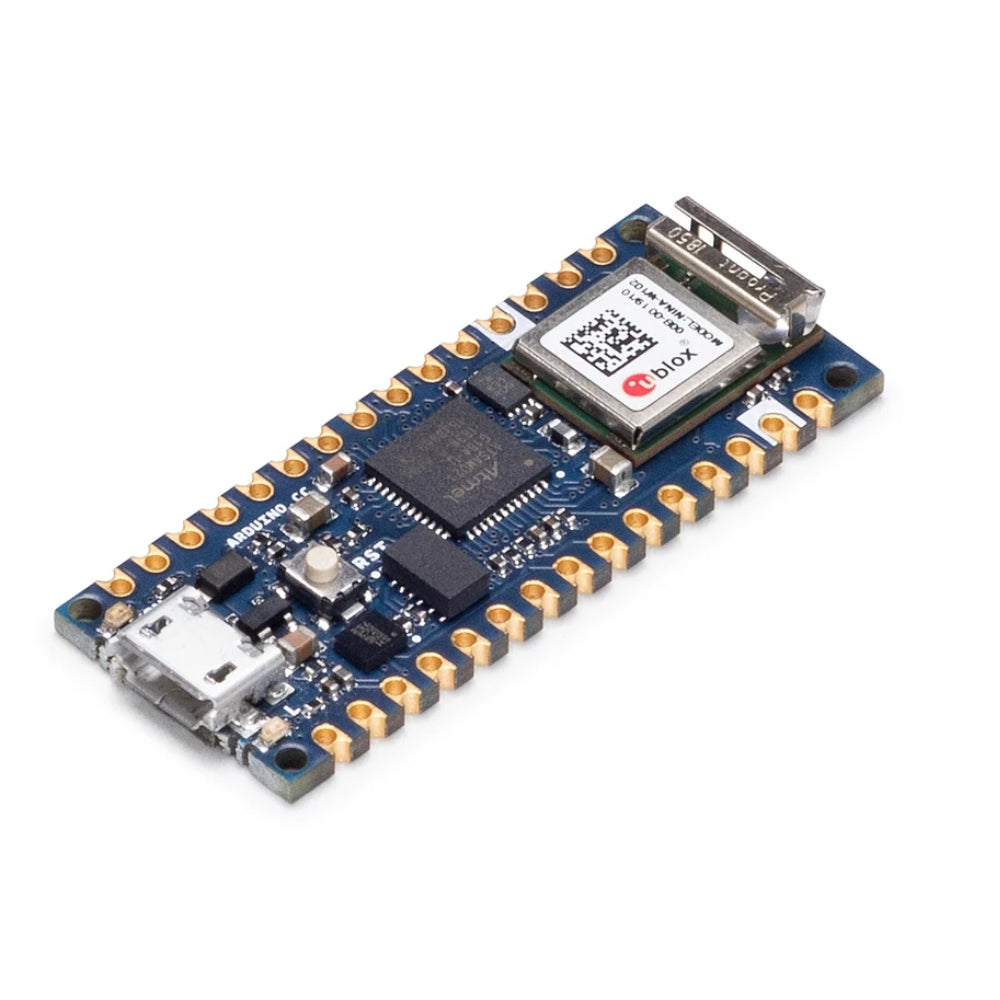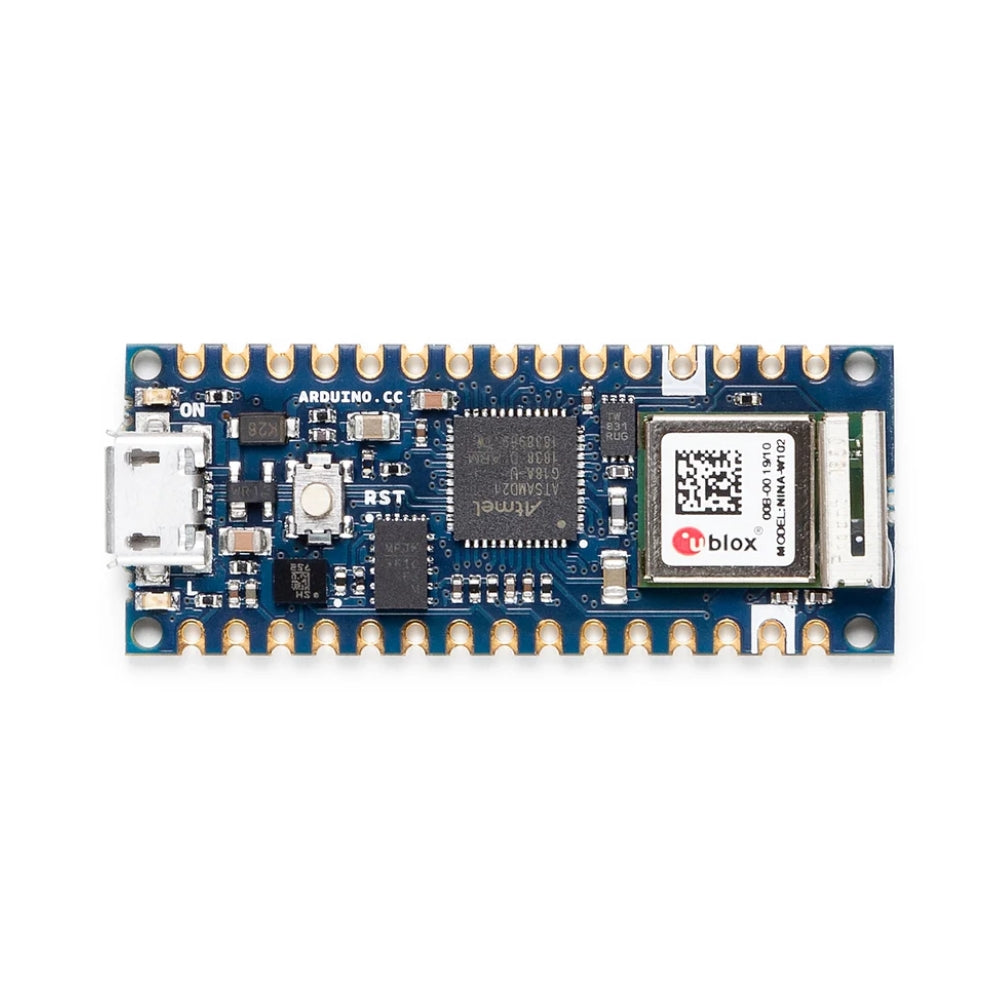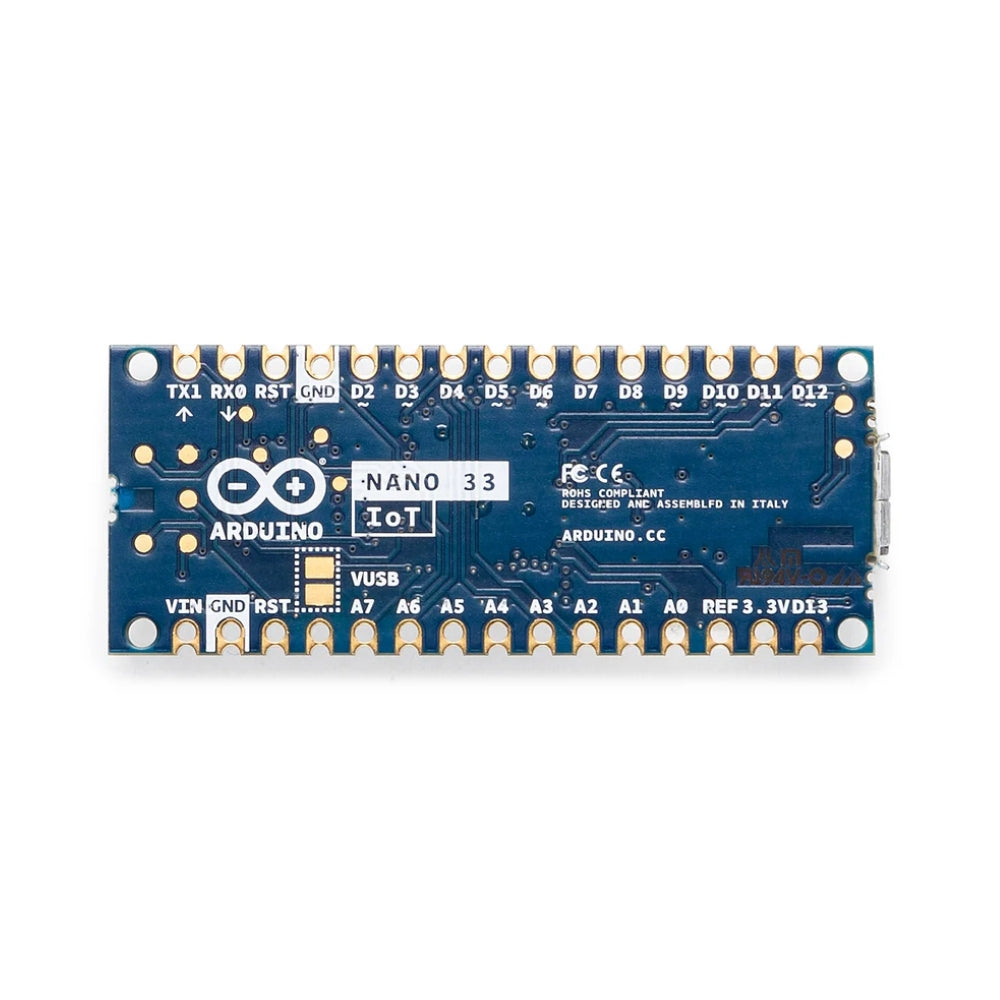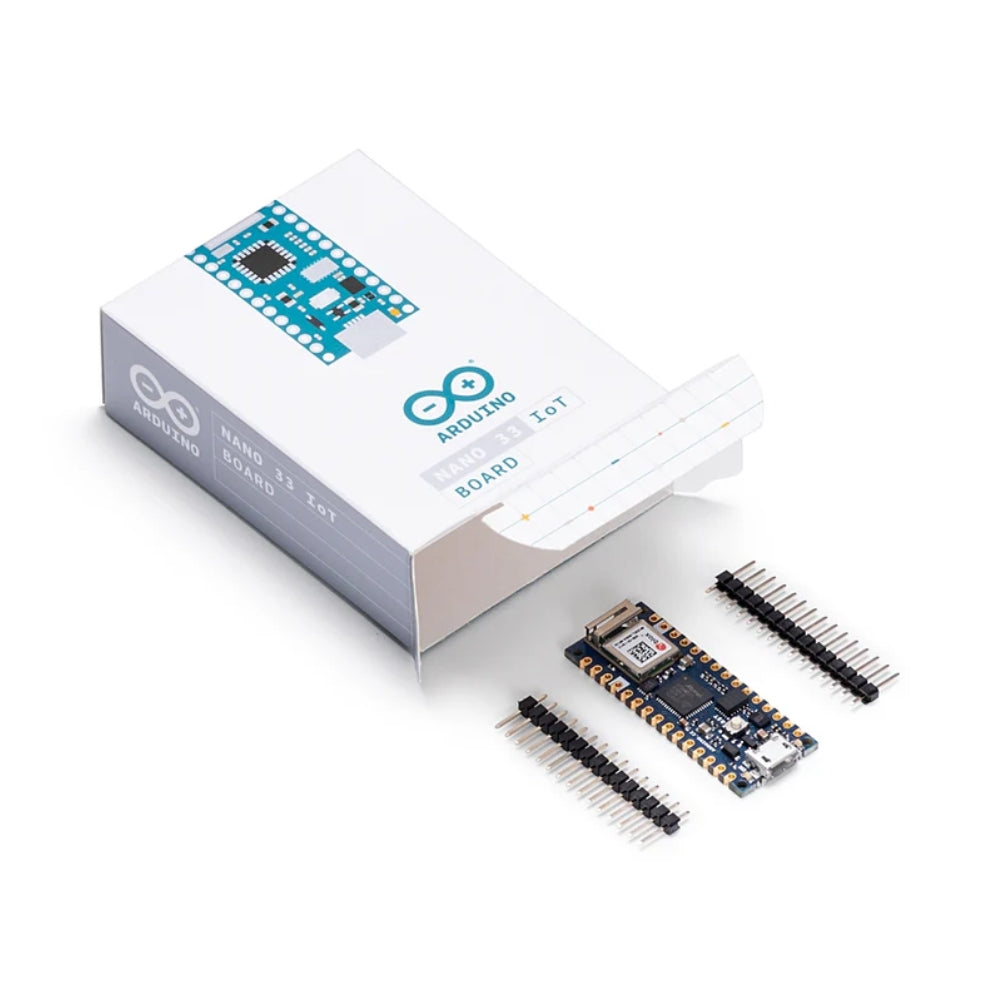Description
Arduino Nano 33 IoT
The Arduino Nano 33 IoT is a compact, powerful, and feature-packed microcontroller board from the Arduino Nano family, designed specifically for Internet of Things (IoT) applications. Based on the nRF52840 (ARM Cortex-M4) microcontroller, this board integrates Wi-Fi and Bluetooth Low Energy (BLE) connectivity, enabling the development of connected devices and systems that communicate wirelessly.
Ideal for IoT projects, the Nano 33 IoT is small in size yet powerful in its capabilities. The integrated Wi-Fi (via the Murata 1DX module) and Bluetooth Low Energy support enable seamless communication with other devices, networks, and the cloud. It is fully compatible with the Arduino IDE, making it easy to program and use in both educational and professional projects. This makes the board perfect for applications like remote sensing, home automation, and connected health devices.
Technical Specification:
- Microcontroller: nRF52840 (ARM Cortex-M4, 32-bit, 64 MHz)
- Wi-Fi Connectivity: Integrated Murata 1DX module (802.11 b/g/n) for Wi-Fi.
- Bluetooth: Bluetooth Low Energy (BLE) support for communication with smartphones and other BLE devices.
- Operating Voltage: 3.3V
- Input Voltage (recommended): 5V via USB or external power supply (3.6V to 6V).
- Digital I/O Pins: 14 (of which 6 can be used as PWM outputs)
- Analog Input Pins: 8 (12-bit ADC resolution)
- Flash Memory: 1MB
- SRAM: 256KB
- EEPROM: 0KB
- Clock Speed: 64 MHz
- USB Interface: Micro USB for programming and communication
- Security Features: Built-in Secure Element for enhanced security in IoT applications.
- Dimensions: 45mm x 18mm
- Operating Temperature Range: -40°C to 85°C
- Power Consumption: Low power consumption with multiple power modes (ideal for battery-operated devices).
- LED: Onboard user LED (connected to pin D13).
- Development Environment: Arduino IDE (compatible with existing Arduino libraries).
Features:
- Integrated Wi-Fi and BLE: The Nano 33 IoT combines both Wi-Fi and Bluetooth Low Energy (BLE) in one compact package, making it perfect for wireless communication in IoT applications.
- Secure Element: Equipped with a Secure Element for secure storage of sensitive data, ideal for applications involving encrypted communication or secure transactions.
- Compact Size: Small size (45mm x 18mm), making it suitable for compact, space-constrained projects.
- Low Power Consumption: Designed with low power usage in mind, it is suitable for battery-operated or energy-efficient devices.
- Compatibility with Arduino IDE: Works seamlessly with the Arduino IDE, supporting many Arduino libraries and shields, making it easy for developers to start building applications quickly.
- Multiple Connectivity Options: Offers Wi-Fi for internet access and BLE for local communication with smartphones and other BLE-compatible devices.
- Easy-to-Use: Simple and intuitive design, ideal for both beginners and professionals.
- High-Resolution ADC: 12-bit ADC for high-resolution analog input readings.
- Rich Communication Protocols: Supports I2C, SPI, UART, and more for connecting a variety of sensors and peripherals.
Pin Description:
-
Power Supply Pins:
- 5V: Power input (from USB or external source).
- 3.3V: 3.3V output (use for powering components).
- GND: Ground pins (2x)
-
Digital I/O Pins (D0 - D13):
- General-purpose I/O pins for reading sensors or controlling actuators.
- D3, D5, D6, D9, D10, D11: PWM output capable pins.
-
Analog Input Pins (A0 - A7):
- 8 analog input pins for reading analog sensors. 12-bit ADC resolution.
-
SPI Pins:
- MISO (D12), MOSI (D11), SCK (D13), SS (D10): Pins for SPI communication.
-
I2C Pins:
- SDA (A4) and SCL (A5): Pins for I2C communication.
-
UART Pins:
- TX (D1) and RX (D0): Serial communication (UART) pins.
-
External Interrupt Pins:
- Pins D2, D3 can be used as external interrupt sources.
Applications:
- Smart Home Automation: Control lights, locks, thermostats, and other appliances over the internet using Wi-Fi or Bluetooth Low Energy.
- IoT Sensors: Build connected sensors for monitoring temperature, humidity, motion, and more, transmitting data to the cloud or local devices.
- Wearable Devices: Create health-monitoring systems or fitness trackers that use BLE for communication with smartphones or other BLE-enabled devices.
- Remote Control Systems: Design systems that allow remote control of devices or robots via Wi-Fi or Bluetooth, including home robots or drones.
- Wireless Data Logging: Collect data from sensors and upload it wirelessly to a server or cloud for storage and analysis.
- Smart Agriculture: Monitor soil moisture, temperature, and other environmental conditions and transmit this data wirelessly to a central server for analysis.
- Industrial IoT: Create IoT systems for remote monitoring of industrial machines, sensors, or systems for predictive maintenance or status updates.
- Security and Surveillance: Build wireless security systems that transmit video or sensor data to smartphones or the cloud, or enable smart door locks.
- Connected Health Devices: Develop IoT-based health-monitoring systems that track vital signs and communicate wirelessly for remote monitoring.
- Environmental Monitoring: Use the board for environmental sensing applications such as air quality monitoring or wildlife tracking, transmitting data remotely.




